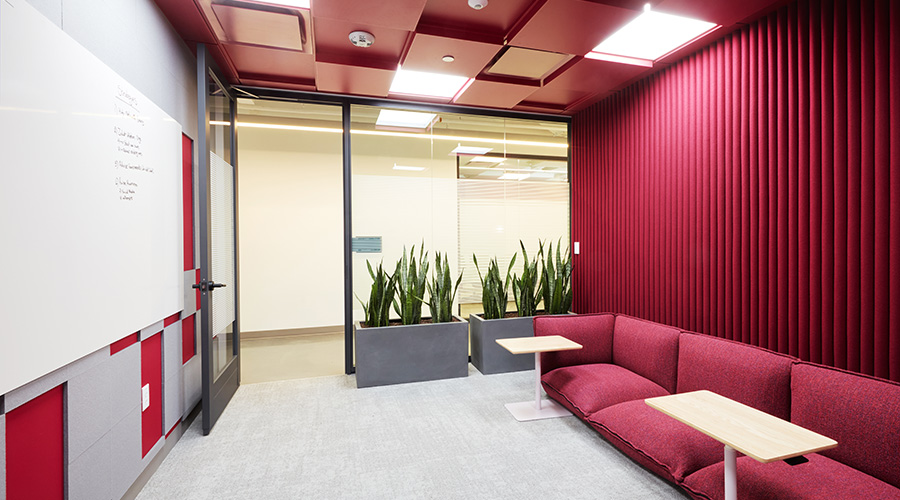How To Match Facility Acoustics to a Space's Purpose
Soundmasking, duct lining (for HVAC noise), and other strategies can help attenuate the signal-to-noise ratio to what's appropriate for a given space.
There is an old radio signal communication of “five by five.” The literal translation is that everything is “loud and clear.” Facility managers — generally speaking — want spoken communications to be loud and clear. But the problem often comes in with the notion of ”clear” and the things that affect clarity and therefore intelligibility.
A wide range of factors influence intelligibility. In any building environment, there will be excess noise that comes from traffic, other occupants, mechanical equipment, soundmasking units, and a host of other ambient sources.
“Basically, speech intelligibility comes down to how high the voice level is at the listeners’ location, relative to the amount of background sound,” says Niklas Moeller, vice president of KR Moeller Associates Ltd. This relationship is known as the signal-to-noise ratio.
“Room materials such as hard surfaces [can also] reduce intelligibility,” Hamilton says.
But he’s also careful to note that — if ambient noise is too high — increasing volume often has an effect opposite of what’s desired. “Another factor that will reduce intelligibility is the sound pressure level,” he says. “For intelligibility, louder is not better.” Above the range of 70 to 80 dBSPL, Hamilton says, hearing loss becomes a concern and intelligibility is lost.
Where noise is an obstacle to intelligibility, there are options. When the noise comes from mechanical systems, for example, Browne suggests tuning HVAC units, using duct lining, and other silencers. For exterior noise, options include multi-pane windows or sound-absorbing cladding on a building façade.
Need for privacy
Although speech intelligibility is the goal in some cases — whether in a classroom or an open office when announcements are coming over a mass notification system — it is counterproductive in other cases.
“Take the open-plan office, for instance,” says Moeller. “While confidentiality might not be a goal, steps should still be taken to reduce the degree of intelligibility within this environment because the more comprehensible speech is, the greater the distraction it poses to unintended listeners who are trying to concentrate on tasks.”
“Speech that one does not wish to hear, especially when it is intelligible, is very distracting,” says Madaras. “We are programmed to hear and identify speech, even when we would rather not.”
He notes that this trait is exactly why so many studies find that employees’ productivity and satisfaction decrease so drastically in open offices. In open office plans, studies generally note that — after an employee has become distracted by noise — it takes time following the disruption has ceased to get back on focus and become productive again.
Madaras notes that this issue is further exacerbated by current architectural trends of increasing occupant density in open offices and eliminating workstation dividers.
When looking at how best to increase speech privacy, facility managers should refer to the ABCs of acoustic design — things that absorb, block, and cover sound. “Ideally some combination of all of the three ABCs should be employed, but additional partitions and walls can be expensive and impractical,” says Hughes. “Soundmasking provides the ‘cover’ part of the equation.” In doing so, it reduces the distance at which unintended conversations can be understood.
As Hamilton notes, the ABCs may already be in place in the work environment: Consider carpeting on floors, window treatments such as curtains, and use of padded chairs versus hard or open fabric types, he suggests.
Related Topics:














